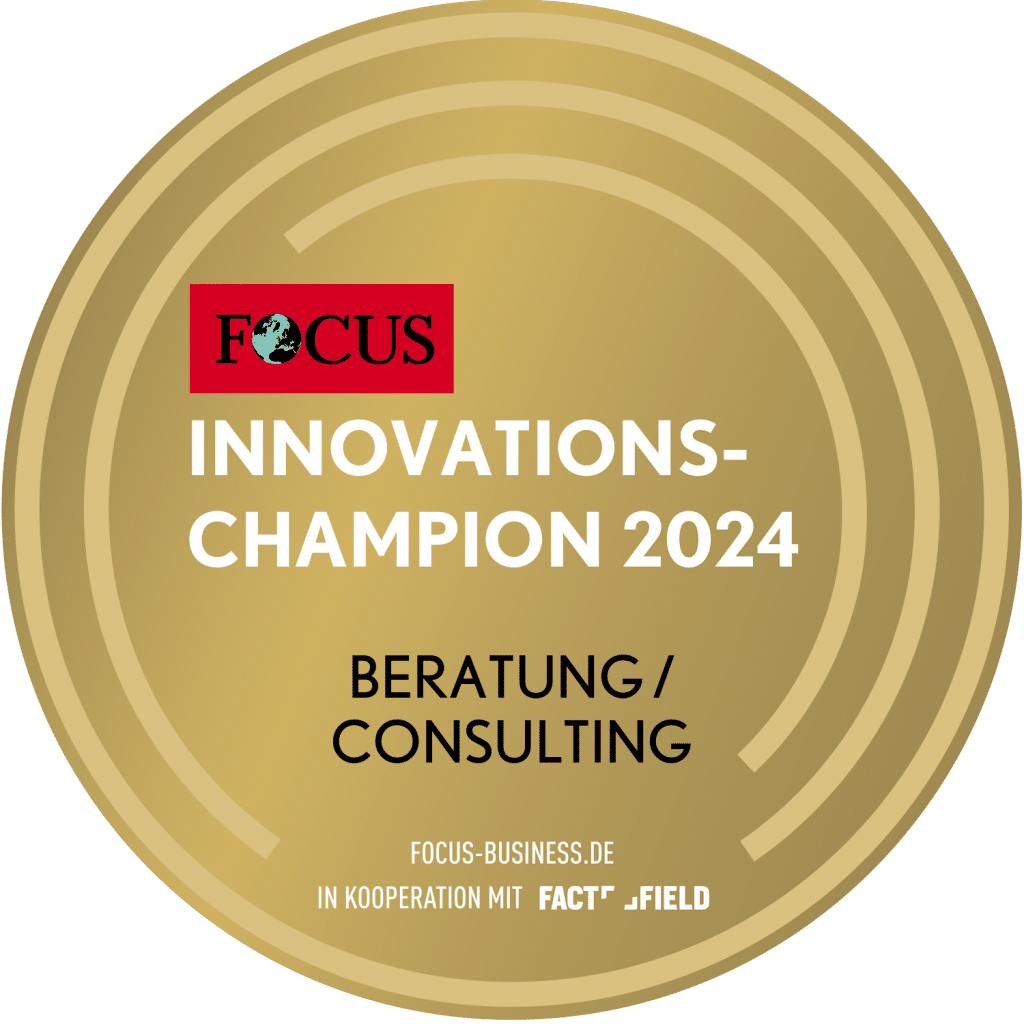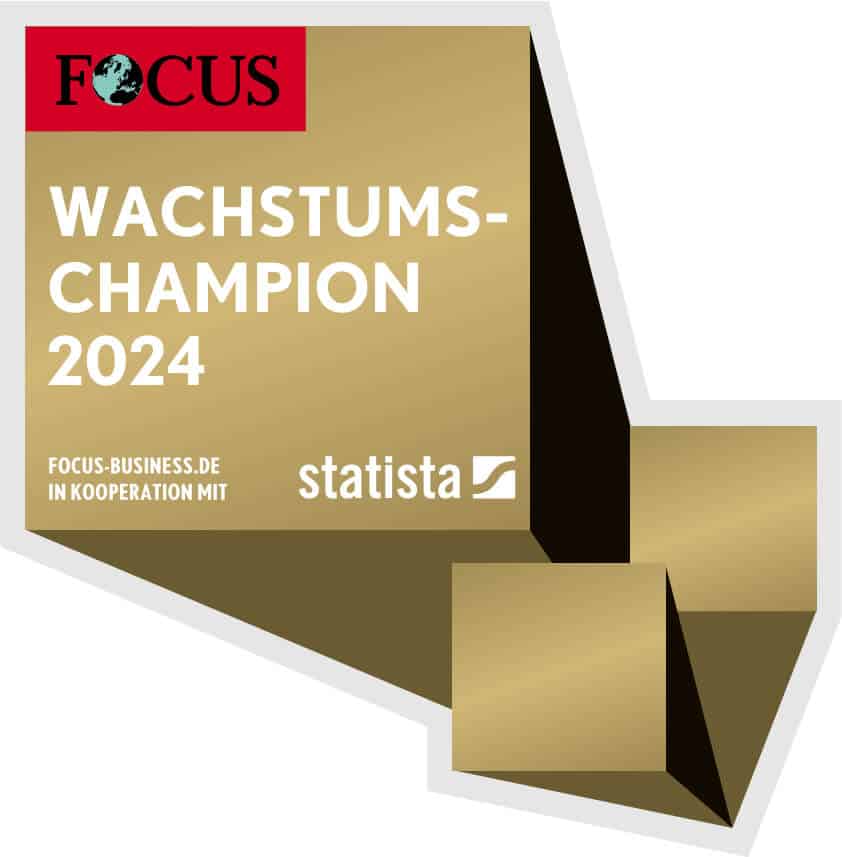Even at the top companies, there is a sense of unease. A dissatisfaction with their own status quo. Or the sounding of alarm bells. A good thing to "shake the team awake". Take Oliver Bäte, for example, who gives Allianz IT the rating "crap". Or the head of Evonik, Christian Kullmann, who even wants to give his organization a bikini figure. He and his management team want to develop a new administration that is leaner, faster and more international.
Nothing illustrates the polarity of rise and fall more strikingly than the two-part front page of the Handelsblatt of November 10, 2023. 80 percent of the space was given to Aleph Alpha founder Jonas Andrulis ("All of Europe should hope that this entrepreneur succeeds") and just 20 percent to the Sigma Group with René Benko ("The Benko quake: rise and fall of the former real estate wunderkind").
Are the rise and fall of companies, following a law of nature, inevitable phenomena? Or, as Jeff Bezos puts it, that "Day 2" is inevitable. He explains - "Day 2 is stasis. Followed by irrelevance. Followed by excruciating, painful decline. Followed by death."
Or is the idea of the "Unbeatable Organization" a counter-model to this?
Not worth the effort
Much of what happens in companies is not worth the effort, perhaps superfluous or does not add value. Examples include "justification initiatives" such as strategies, planning or business distribution plans that result in organizational charts.
What is a multi-year plan worth? Does a 10-year plan provide orientation or even arguments for (re-)investments? The tendency to plan down to the item sales and turnover in budgeting rounds makes little sense and certainly does not make sense.
In contrast, a long-term orientation of the company is more important; developing a picture of the future and taking people with you. It is essential to understand that decisions are always made on the basis of incomplete information and are therefore never entirely rational. Added to this are the prejudices of the people involved. In one case, these can speed up a decision (good enough), but in other cases they can lead to exaggeration and wrong decisions.
How much room is left for reflection and is there a commitment to a culture of innovation that allows for mistakes, trial and error? And thus can only seize an opportunity for disruptive innovations. Or does the tendency to avoid risk and justify being right win out?
An entrepreneurial culture in the true sense of the word thrives on evaluating risks and taking or avoiding them with an open eye. The rules of an industry can only be changed by those who take risks. Companies that cultivate an open learning culture and encourage the assumption of responsibility will be all the more successful.
Innovation culture
Christiansen points out that even established companies whose DNA is designed for incremental innovations can also develop disruptive innovations. However, they can only do this in new business units, separate from their core business. This is because they need a different organizational and cost structure. He postulates that entrepreneurship is a backup plan for companies because they cannot innovate internally. Entrepreneurship means trial and error and we have not yet learned how to do this internally. His concept is based on a certain distance to data. He explains: "I think it's wrong to make management decisions solely on the basis of data. I imagine I go to heaven and ask myself why there is no data. Then I am told that data always lies. And whenever data wants to go back to heaven, we send it to hell".
As the result of a study in the 1980s, Peters and Waterman identified characteristics of particularly successful American companies. Of the eight characteristics, we will only mention four here: First of all, there is the primacy of action. This means trial and error, coupled with a certain shirtlessness. Derived from this is the freedom for entrepreneurship. Here, the willingness to take risks and inventiveness are to be encouraging virtues. From the perspective of the organization, a simple and flexible structure should help in competition. This is embedded in the demand for the elegance of simplicity and the avoidance of the matrix. Finally, proximity to the customer should be sought. The customer is the center, he is the source of ideas.
Christiansen points out a dilemma here. Established companies are keen to offer customers ever better solutions to their requirements. However, this leads to incremental improvements rather than disruptive ones.
Leadership principles
Maucher develops management and leadership principles for Nestlé. The focus should be on people and brand products rather than systems. In terms of organizational principles, he considers flat structures with few hierarchical levels but with broad spans of control to be important. This aims to prevent micro-management. He advocates clear responsibilities: At each level of the organization, a team with a top, not a team as a top.
The need to adapt and the speed of change require each individual to be prepared to take on more responsibility. This requirement can be discussed on three levels.
- Set the compass:
-
- Courageous, quick decisions, calculable risks, constructive contradiction
- No (re)delegation to the hierarchy
- Experimental approach and the tolerance of errors
- Getting better, innovation mindset, high innovation rate
- Design the framework:
-
- Lean structures and automated processes
- Modern tools and methods
- Data management for decision-making
- Identify and monetize (digital) business opportunities (e.g. platforms, ChatGPT)
- Create development opportunities:
-
- Assuming responsibility even without an explicit role
- Developing individual potential
- Necessary freedom and development prospects for employees and teams
- No security routines and bureaucracy
Organizational development
For the perspective of corporate development, three levels of organization with a total of nine levels of action are derived from this. This system begins with the corporate values. In the second level, it includes governance (structure, processes, rules), culture and purpose. The third layer addresses the work level (incentives, employees, type of communication, systems, ability to change).
Each of these dimensions of action lives in connection with the other dimensions and shows an individual profile of strengths and weaknesses for the individual company. This profile has a dynamic that is adapted to the life cycle and needs to be adjusted over time. The resulting pressure to act is completely different for individual companies, as it is largely shaped by decisions and the associated management prejudices from the past. The "impulses" can be, for example, the company's own error culture, the pressure to innovate, employee satisfaction or the customer recommendation rate (NPS).
To stay with the image, the aim is to create the "unbeatable organization" and set the important course over time. To find the characteristics for this, develop them and bring them together.
Orchestrating these characteristics in the chosen path of organizational development is of central importance - the supreme discipline, if you will.
The "impact" of organizational development is important. After all, the employees have to be involved. It is important to avoid the disastrous image that Commerzbank's Board of Managing Directors presents. In an internal survey, only a quarter of employees stated that the decisions made by the Board of Managing Directors are comprehensible. (Handelsblatt, 16.10.2023)
A clear diagnosis and ruthless openness about the initial situation are key tasks at the start of an organizational development project. Continental's Automotive division, for example, provides guidance here: "Simplifying structures and reducing functions is essential for our successful future." The claim: "All functions and processes are analyzed with an open mind." (Handelsblatt, 14.11.2023)
Feedback from the organization must be obtained - employees and managers are equally important here. These results must be consolidated and combined with the facts of the diagnosis. The priorities that emerge are discussed in a further "direction" work package. Ambitions, goals and scope are defined there.
Priorities are incorporated into the project governance to be designed, which secures the target direction as well as possible adjustments.
Depending on the results of the work packages outlined here, concepts for organizational design, future viability, the elimination of existing bottlenecks, such as talent, or even approaches to simplifying structures and processes in the sense of the elegance of simplicity, are then developed.
Conclusion
Once we move away from the structural characteristics of organizations (functions, divisions, regions, matrix), the main task is to identify characteristics of organizations that can create a competitive advantage. However, these differ for individual companies, as cultures and histories, i.e. the life cycle, differ from one another. It is precisely the classification of individual strengths and weaknesses that is central to making progress in organizational development with the right focus and the necessary priorities. There is probably a company-specific DNA that must be taken into account in the further development of companies. And defining the path to this is worth the effort.
About the author
Dr. Harald Münzberg is a Senior Advisor to TCI. His work focuses on strengthening competitiveness and increasing organizational performance. He has extensive industry and retail experience and supports FMCG companies, for example, in the implementation of price and condition systems.
Literature:
Bezos, Jeff: Letter to the shareholder 2016, Amazon Annual Reporting
Christensen, Clayton M.: The Innovators' Dilemma, New York 1997
Christensen, Clayton M.: Interview by the Haufe Online editorial team on the occasion of the Global Drucker Forum in Vienna, December 2016
Hemel, Ulrich: Value and Values - Ethics for Managers, Vienna 2005
Mintzberg, Henry: Understanding Organizations ...Finally, Oakland 2023
Peters, Thomas, J.; Waterman, Robert, H. Jr.: In Search of Excellence - Lessons from America's Best-Run Companies, 1982
Schwenker, Burkhard; Müller-Dofel, Mario: Gute Führung - Über den Lebenszyklus von Unternehmen, Cologne 2012
Simon, Herbert A.: Theories of decision making in economics and behavioral science, in: America Economic Review, Voll. 49, No. 3, 1959, pp. 253-283
Selected articles from the Handelsblatt
Versicherungsbote, 7.11.2022: Allianz CEO Oliver Bäte dismantles his own IT strategy with an angry speech
Source cover image: © Marko | Adobe Stock


